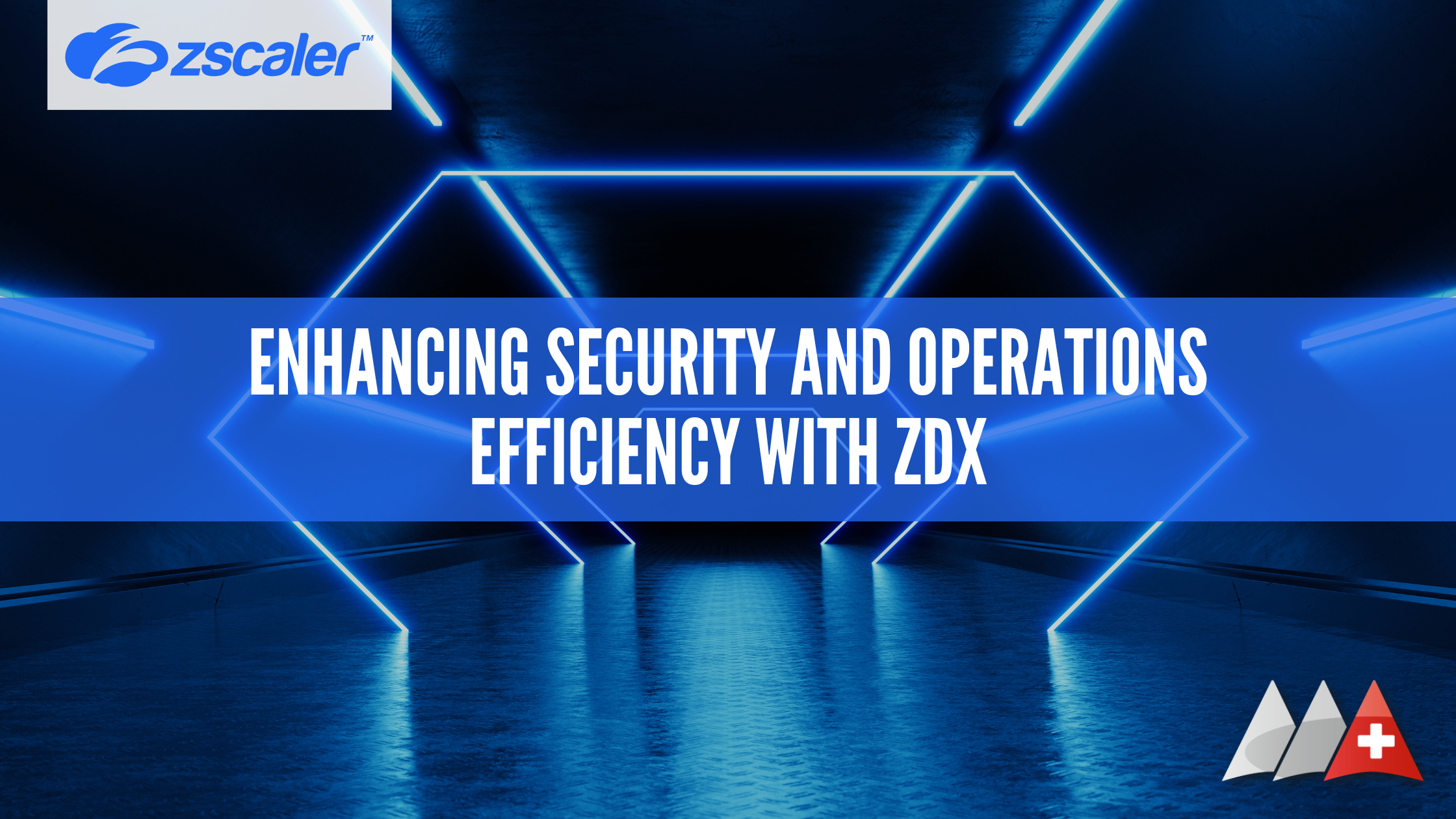ZDX measures user experience metrics providing IT teams with the data they need to identify and troubleshoot performance issues.
Security service edge (SSE) is a service that integrates security and networking functions into a single cloud-based platform. This approach is designed to provide consistent and reliable security across all locations and devices within an organization. Our partner Zscaler is a pioneer in this space and has been recognized as a Gartner Magic Quadrant leader for as long as they have had the quadrant.
The challenges of digital experience monitoring
While security was the main focus for Zscaler’s SSE offering, a few years ago, the company added a visibility product called Zscaler Digital Experience (ZDX), which helps its customers measure and analyze the performance of business-critical apps, identify issues, get actionable insights, and more. The thesis is sound in that security companies must capture and analyze traffic to find threats. The same data can be looked at for performance information. Other network management companies have tried this in the past, such as NetScout and Riverbed. Still, both flopped in security, partially because of poor product but more because networking and security had yet to converge seriously. Since Zscaler launched ZDX, other SSE providers have launched visibility products.
I recently caught up in person with Javier Rodriguez, Zscaler’s director of product management, at the RSA Conference, which took place April 24-27 in San Francisco. Rodriguez discussed the latest release of ZDX and how it brings security and network teams together.
Here are the highlights of the ZKast interview.
End-to-end visibility with Zero Trust Exchange
ZDX leverages Zscaler’s security platform, Zero Trust Exchange, to provide end-to-end visibility into an organization’s digital environment—from the user’s device to the application server. ZDX measures user experience metrics like response time, page load times, and availability, providing IT teams with the data they need to identify and troubleshoot performance issues. ZDX also provides a comprehensive view of an organization’s internet traffic and usage patterns.
New security monitoring features
Zscaler uses zero trust not only as an authentication mechanism but also as a modern security monitoring tool. With millions of data points, it’s necessary to have visibility and metrics to identify issues. One key feature called tracing allows the configuration of an app to send additional telemetry and check policy based on responses.
A growing data set
With over 30 million agents, Zscaler has access to a massive data set that helps identify issues that affect certain apps. This is important because it allows organizations to have a comprehensive view of their digital experience and detect problems quickly. ZDX is Zscaler’s fastest-growing product category due to a combination of factors, including the need for visibility in the context of security, the challenges of troubleshooting in situations like pseudo-trust, the impact of cloud computing and COVID-19, and the importance of quantitative data in positioning the product.
- Initially, ZDX was primarily used by security operations, but IT operations have also found it useful. Since ZDX provides a detailed view of an organization’s network, apps, endpoints, and Wi-Fi, it’s a helpful tool for both security and IT operations for pinpointing issues. ZDX has different use cases in the enterprise. Examples include monitoring hybrid workplaces and collaboration tools like Zoom and Microsoft Teams, as well as zero trust monitoring, which identifies problems with Wi-Fi or internet connections.
- ZDX comes in standard and advanced versions. The standard version provides minimal features, enough to understand the performance of apps. The advanced version includes additional features like faster resolution, more alerts, and new artificial intelligence (AI) capabilities that Zscaler recently rolled out to provide IT teams with advanced insights and help them resolve issues faster. The advanced version also collects more data at a higher frequency, making it suitable for organizations with more complex environments.
- The newly released AI capabilities show how users are experiencing apps, offer solutions for performance issues, and measure the quality of meetings in apps like WebEx. ZDX already works with Microsoft Teams and Zoom. With AI analysis and alerts, IT teams can address user complaints faster and compare good and bad experiences. ZDX also helps troubleshoot devices for remote workers and supports network problem-solving, privacy rules, and tracing of protected apps.
- Last year, Zscaler announced a partnership with Zoom for unified communications as a service (UCaaS) monitoring. The feature is included in the advanced version and works by integrating with Zoom’s application programming interface (API) to gather additional signals like data latency and loss.
- Zscaler is launching several other new features: third-party proxy support for complex deployments; AI to make it easier for analysts to detect incidents and troubleshoot; a single-screen dashboard for customers; and support for Webex integration. Additionally, Zscaler is leveraging internet service provider (ISP) insights to understand “last mile” performance. These developments are important for organizations because they provide more visibility and monitoring capabilities to troubleshoot issues and make informed decisions based on performance data.
Watch the entire ZKast interview or read the whole article HERE
For further information please contact us by using our contact form.

